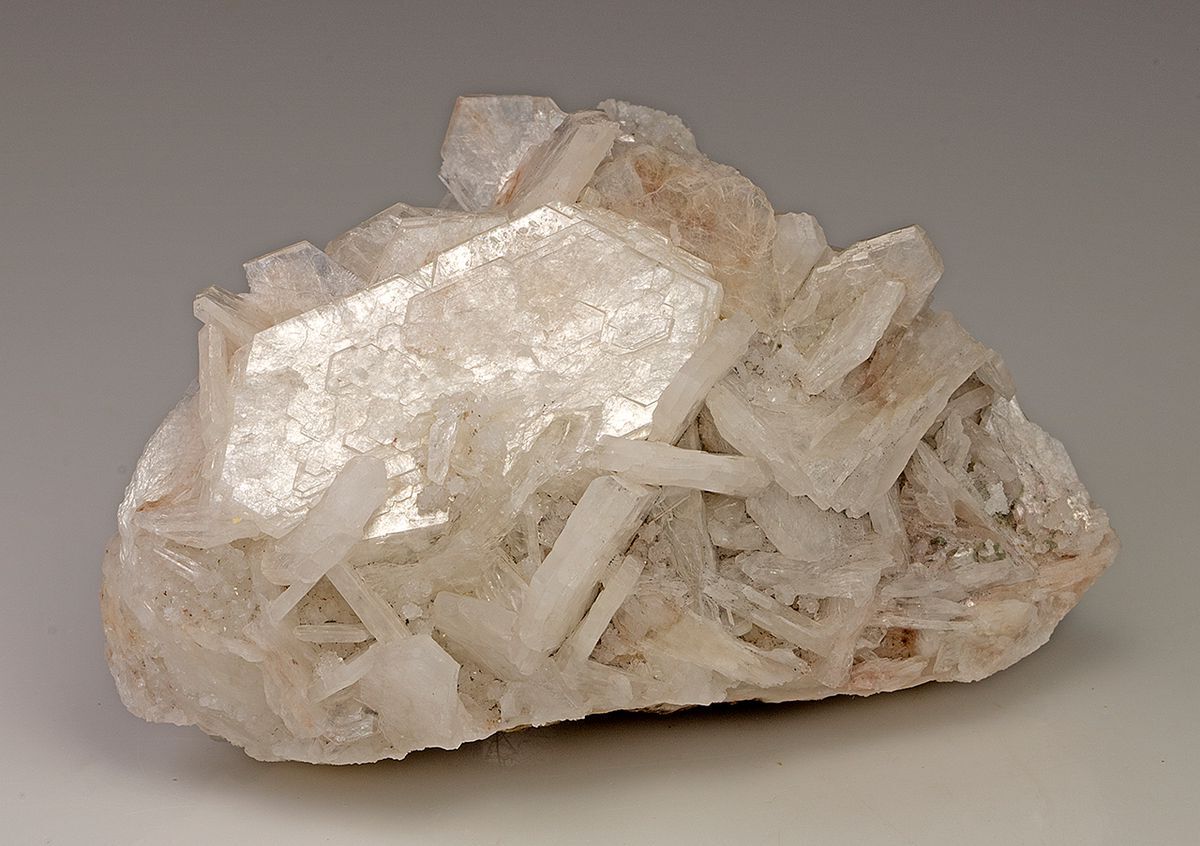
What is Barrerite? Barrerite is a rare mineral belonging to the zeolite group, known for its unique crystal structure and fascinating properties. Found primarily in hydrothermal environments, this mineral often forms in cavities within volcanic rocks. Its striking white to pinkish hues make it a favorite among collectors and geologists alike. Why is Barrerite special? This mineral's ability to exchange ions and absorb water makes it valuable in industrial applications, such as water purification and gas separation. Additionally, its rarity adds to its allure, making it a sought-after specimen for mineral enthusiasts. Ready to dive into 30 intriguing facts about Barrerite? Let's get started!
Key Takeaways:
- Barrerite, a zeolite mineral, has a unique crystal structure and can absorb water and gases. It's named after Richard Barrer and has practical uses in water purification, gas separation, and even as a soil conditioner.
- Found in various locations worldwide, barrerite is prized by collectors for its unique crystal formations. It's also used in scientific research to study zeolites and their potential applications, and can even be found in jewelry despite its relative softness.
What is Barrerite?
Barrerite is a fascinating mineral that belongs to the zeolite group. It is known for its unique crystal structure and its ability to absorb water and gases. Let's dive into some intriguing facts about this mineral.
-
Barrerite is named after Richard Barrer, a New Zealand-born chemist who made significant contributions to the study of zeolites.
-
This mineral was first discovered in 1974 in the United States, specifically in the state of Washington.
-
Barrerite typically forms in hydrothermal environments, where hot water interacts with volcanic rocks.
-
It is often found in association with other zeolites, such as stilbite and heulandite.
-
The crystal structure of barrerite is orthorhombic, meaning it has three mutually perpendicular axes of different lengths.
Physical Properties of Barrerite
Barrerite has some unique physical properties that make it stand out among other minerals. Here are a few key characteristics:
-
The color of barrerite ranges from white to colorless, although it can sometimes appear pale pink or yellow.
-
It has a vitreous to pearly luster, giving it a shiny, glass-like appearance.
-
Barrerite has a Mohs hardness of 3.5 to 4, making it relatively soft compared to other minerals.
-
The mineral has a specific gravity of 2.1 to 2.2, which is considered light.
-
Barrerite crystals are typically prismatic and can form in clusters or as individual crystals.
Chemical Composition of Barrerite
The chemical composition of barrerite is quite complex, involving several elements. Here are some details:
-
Barrerite's chemical formula is (Na,K)2Ca2[Al6Si30O72]·.
-
Barrerite can exchange its sodium and potassium ions with other cations, a property known as ion exchange.
-
This ion exchange capability makes barrerite useful in water purification and softening processes.
-
The mineral's porous structure allows it to absorb water and gases, making it valuable in industrial applications.
Uses of Barrerite
Barrerite has several practical uses due to its unique properties. Here are some examples:
-
It is used in water purification systems to remove heavy metals and other contaminants.
-
Barrerite can act as a catalyst in chemical reactions, speeding up the process without being consumed.
-
The mineral is employed in gas separation technologies, helping to isolate specific gases from mixtures.
-
It is also used in agriculture as a soil conditioner, improving water retention and nutrient availability.
-
Barrerite's ability to absorb odors makes it useful in air fresheners and deodorizers.
Occurrences and Locations of Barrerite
Barrerite is found in various locations around the world. Here are some notable occurrences:
-
The type locality for barrerite is in the state of Washington, USA, where it was first discovered.
-
Significant deposits of barrerite have been found in Italy, particularly in the Campania region.
-
The mineral has also been reported in Japan, specifically in the Hokkaido region.
-
Barrerite occurs in the Faroe Islands, an archipelago located between Iceland and Norway.
-
Other notable locations include India, Russia, and New Zealand.
Interesting Facts about Barrerite
Here are some additional intriguing facts about this unique mineral:
-
Barrerite is often used in scientific research to study the properties of zeolites and their potential applications.
-
The mineral's name was officially approved by the International Mineralogical Association in 1978.
-
Barrerite can form pseudomorphs, where it replaces another mineral while retaining the original mineral's shape.
-
It is sometimes used in jewelry, although its relative softness makes it less suitable for everyday wear.
-
Collectors prize barrerite for its unique crystal formations and its association with other rare zeolites.
The Fascinating World of Barrerite
Barrerite, a rare and captivating mineral, offers a glimpse into the Earth's geological wonders. Found primarily in volcanic rocks, this zeolite mineral is prized for its unique crystal structure and vibrant colors. Its ability to absorb and filter substances makes it valuable in industrial applications, including water purification and gas separation.
Collectors and geologists alike are drawn to barrerite for its beauty and scientific significance. Its rarity adds to its allure, making it a sought-after specimen in mineral collections worldwide. Whether you're a seasoned geologist or a curious enthusiast, barrerite's intriguing properties and uses provide endless opportunities for exploration and discovery.
Understanding barrerite not only enriches our knowledge of Earth's natural resources but also highlights the intricate processes that shape our planet. Keep an eye out for this remarkable mineral, and you might just uncover a piece of Earth's hidden treasures.
Frequently Asked Questions
Was this page helpful?
Our commitment to delivering trustworthy and engaging content is at the heart of what we do. Each fact on our site is contributed by real users like you, bringing a wealth of diverse insights and information. To ensure the highest standards of accuracy and reliability, our dedicated editors meticulously review each submission. This process guarantees that the facts we share are not only fascinating but also credible. Trust in our commitment to quality and authenticity as you explore and learn with us.


